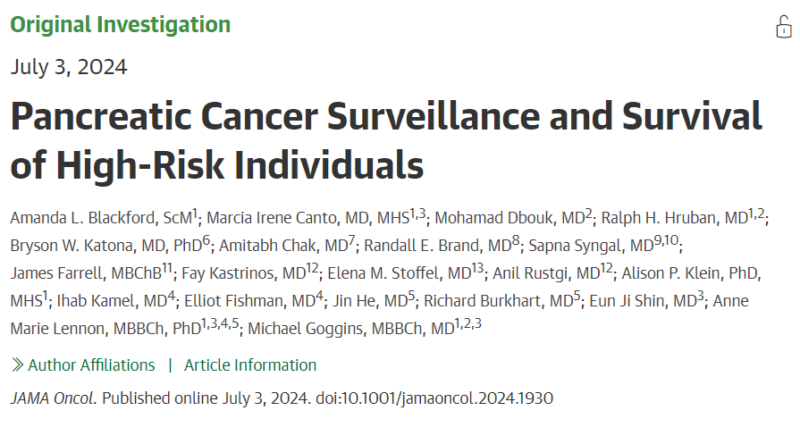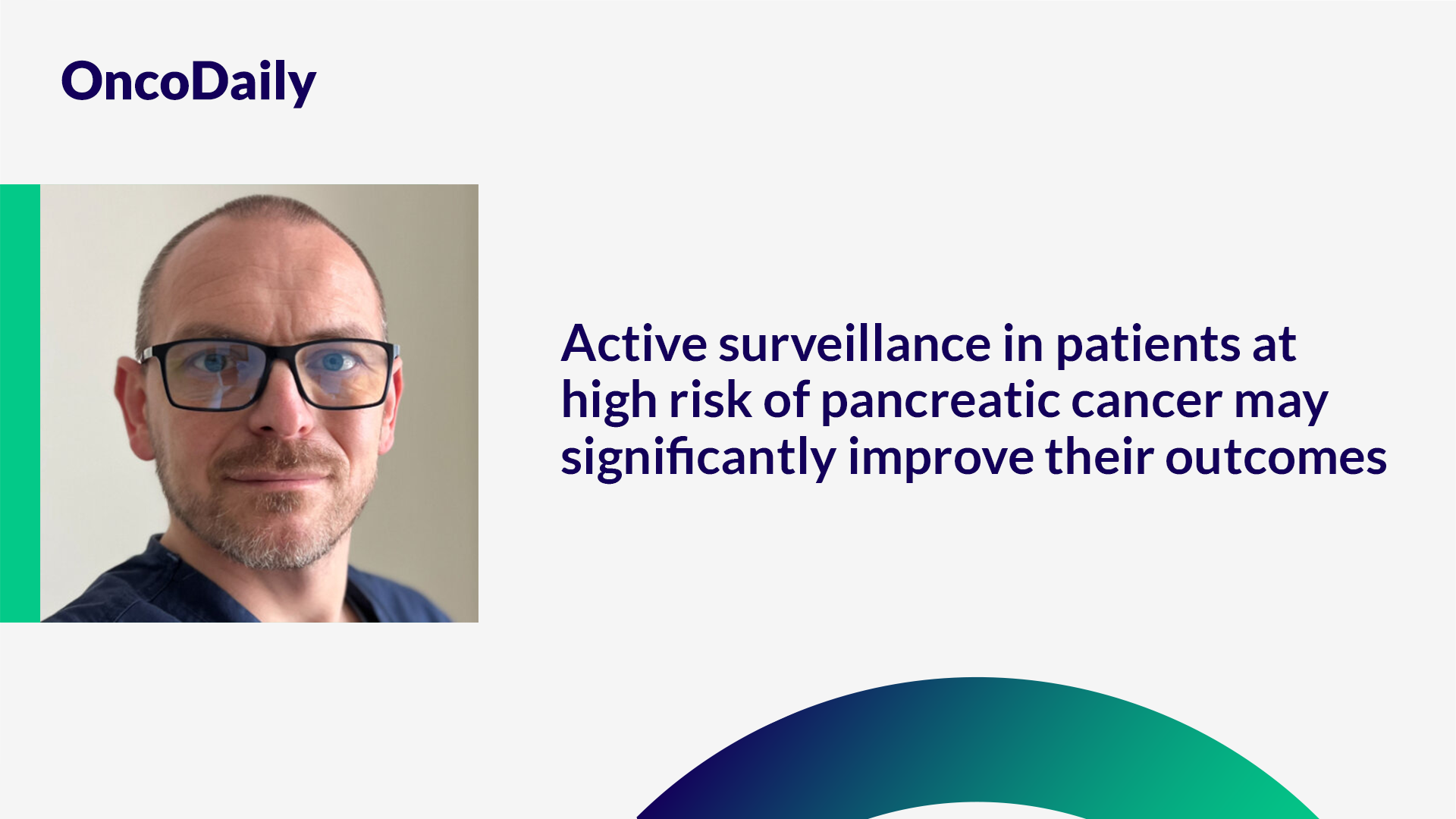Piotr Wysocki recently posted on LinkedIn:
“Blackford AL et al. published results of a cohort study evaluating the role of pancreatic cancer surveillance in high-risk individuals. This comparative study involved multiple US academic medical centers from the Cancer of the Pancreas Screening program, targeting high-risk individuals with familial or genetic predisposition for pancreatic ductal adenocarcinoma (PDAC). The comparison cohort included PDAC patients from the SEER program (1998-2021), matched by age, sex, and diagnosis year. The study compared the stage of PDAC at diagnosis, overall survival (OS), and PDAC mortality.
Participants underwent annual endoscopic ultrasonography or magnetic resonance imaging, followed by standard-of-care treatments.
After comparing 26 high-risk individuals (mean age 65.8 years, 57.7% female) with 1504 SEER control patients (mean age 66.8 years, 51.3% female), the results were as follows:
- Median primary tumor diameter at diagnosis for high-risk individuals: 2.5 cm (range 0.6-5.0) vs. control patients: 3.6 cm (range 0.2-8.0); P < .001.
- Stage at diagnosis:
– High-risk individuals: Stage I (38.5%), Stage II (30.8%).
– Control patients: Stage I (10.3%), Stage II (25.1%); P < .001.
- 5-year PDAC mortality rate:
– High-risk individuals: 43%.
– Control patients: 86%; hazard ratio 3.58; 95% CI, 2.01-6.39; P < .001.
- Median overall survival (OS):
– High-risk individuals: 61.7 months (range 1.9-147.3).
– Control patients: 8.0 months (range 1.0-131.0).
- 5-year OS rate:
– High-risk individuals: 50% (95% CI, 32%-80%).
– Control patients: 9% (95% CI, 7%-11%).
Despite a low number of patients at high risk for PDAC, the study clearly shows that active surveillance in this unique population may significantly impact PDAC outcomes, prolonging overall survival and improving the chances of cure.”
Pancreatic Cancer Surveillance and Survival of High-Risk Individuals
Authors: Amanda L. Blackford, Marcia Irene Canto, Mohamad Dbouk, Ralph H. Hruban, Bryson W. Katona, Amitabh Chak, Randall E. Brand, Sapna Syngal, James Farrell, Fay Kastrinos, Elena M. Stoffel, Anil Rustgi, Alison P. Klein, Ihab Kamel, Elliot Fishman, Jin He, Richard Burkhart, Eun Ji Shin, Anne Marie Lennon and Michael Goggins.

Source: Piotr Wysocki/LinkedIn
Piotr Wysocki leads the Clinical Oncology Department at University Hospital and the Faculty of Oncology at Jagiellonian University-Medical College in Krakow, Poland. As an advisor to the Polish Ministry of Health, he shapes the national cancer strategy.
His clinical expertise spans the systemic treatment of breast, gynecologic, and genitourinary cancers, with a focus on developing innovative metronomic chemotherapy-based therapies for advanced cancer patients who have undergone prior treatment.
Read other posts by Piotr Wysocki published on OncoDaily.
